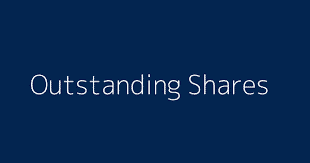The digital asset manager is as important as the computer itself. The digital assets manager is in charge of all computer-related tasks: acquiring, categorizing, and storing information. But is that all there is to the job? Read on for the full job description of a digital assets manager, the average salary, and how you can become one.
Who Is A Digital Assets Manager?
A digital assets manager is in charge of the design and execution of an asset management system. Your responsibilities in this position include inventorying digital assets, developing effective databases, monitoring all digital asset systems, and supervising new upgrades. Many digital asset managers take on additional responsibilities, such as content management or system user training. A bachelor’s degree in computer science, information technology, or a related discipline is required for this position. Knowledge of digital asset management software, good communication skills, and several years of past management experience, often with a specific asset management system, is also required.
Job Description: What Does A Digital Assets Manager Do?
As you might expect, digital asset managers are in charge of an organization’s digital assets. This could involve ensuring that digital files are suitably titled and stored in a digital library. It is also common to design methods for managing these assets. However, the function also requires controlling how these digital assets interact with employees and the general public, including maintaining file permissions and usage rights.
To handle files or other digital assets, most Digital Asset Managers use digital asset management systems. Consider the Asset Manager to be a digital file librarian, although that is only one aspect of the job. These individuals will collaborate with marketing departments, programmers, end users, and other interdepartmental teams.
Understanding The Job Description of The Digital Assets Manager
Digital assets are files in binary format with usage rights. Media files, such as audio recordings, videos, and photographs, and text files, such as blog entries, ebooks, and marketing copy, are examples of assets. Digital asset managers are in charge of gathering, categorizing, administering, and safeguarding an organization’s digital assets. They frequently use a Digital Asset Management (DAM) system to complete these responsibilities. Digital asset managers frequently serve as asset librarians and curators while administering the DAM system.
Digital asset managers are in charge of the following:
- Efficient naming, storing, and management of linked file usage rights.
- Management and monitoring of digital asset access and use, guaranteeing brand consistency, compliance, and copyrights.
- Asset promotion and utilization optimization
Governance, research, guidance, enforcement, and even tool development are all responsibilities of digital asset managers. They organize and render media searchable and ready for use by numerous teams and asset developers by collecting the company’s assets in one location.
In general, a Digital Asset Manager must oversee not only the technology but also the people and processes that interact with it.
Let’s break this down so you understand what we mean:
#1. People
If a big technology rollout is planned, the Digital Asset Manager may be involved in engaging stakeholders to contribute to the rollout’s success.
Alternatively, they may identify a need for extra employee training after the technology has been introduced.
They may even be in charge of writing technical training manuals.
An Asset Manager may act as a change agent for technology implementation, advocating for both the people who use the product and the tool itself.
The Digital Asset Manager also monitors how users interact with files or technology, whether they are internal or external.
#2. Processes
Digital Asset Managers operate at the crossroads of humans and digital tools, therefore they should have a strong eye for workflows and how to improve them.
They design systems, test them, document what happens, and wash, rinse, and repeat as needed.
They may also be in charge of developing and implementing new technologies that streamline legacy platforms and procedures.
Asset managers may also create and manage technology budgets.
#3. Technology
The Digital Asset Manager monitors user adoption patterns as well as external consumer engagement.
In addition to potentially managing video or other visual assets on a website, they may manage and evaluate metadata, work on taxonomy or labeling, or instruct end users.
They design workflows and manage them on behalf of their company.
An Asset Manager’s responsibilities include tracking and monitoring the security of files, as well as designing security protocols to protect data.
The Digital Asset Manager is frequently involved in the road mapping of workflows and procedures that harness automation, assisting humans in using technology to work smarter. However, they also aid in the management of the technology as well as the daily interactions that employees have within digital frameworks.
The job description of a digital assets manager is further summarized as follows:
#1. A Centralized Asset Repository
Maintain a library with properly cataloged assets, as well as information about usage rights, current usage, and context.
#2. Brand Consistency
Ensure that only authorized workers may update access permissions and that relevant and up-to-date versions of digital marketing assets are easily searchable.
#3. High Productivity
Create effective tools for searching and using digital content. Publish up-to-date, unambiguous usage and license information.
#4. Use of Consistent Content
Apply timestamps to material, automate content expiration dates, restrict channel assets, and enforce company-wide compliance with content development and distribution regulations to achieve uniformity of content usage.
#5. Informative and timely reporting
Analyze and report on metrics pertaining to demographics of access, usage, and lifecycle of digital assets, including statistics on audience engagement, on a regular basis.
#6. License and copyright compliance
Ensure that the appropriate licensing and copyright information is included with the content. When a license expires, automate the deletion of the published content.
#7. Accurate, descriptive, and consistent nomenclature
Ensure that digital asset file names are descriptive, accurate, and consistent, and reflect how the assets connect to other files in the system.
#8. Metadata Tagging
Tag digital assets with essential details in the form of metadata, such as the creation date, file name, file type, and file category, for improved organization and ease of search and usage. Check to see if the IPTC metadata is saved in the file.
How to Become a Digital Asset Manager
To become a digital asset manager, you must have a bachelor’s degree in information science, computer science, or a related field. Your responsibilities necessitate a thorough awareness of technology as well as a general comprehension of computer programming. You must be able to organize photographs in a logical manner and have prior catalog management knowledge. Because you will be assessing digital assets and arranging content, you must be detail-oriented and a critical thinker. To manage your staff, you must also have good leadership qualities. Customer service skills and the capacity to motivate yourself and others are also required.
Skills Required To Be A Digital Asset Manager
Digital Asset Managers must be more than just technical experts; they must also be outstanding communicators. They are, in effect, technology advocates who also like to impress others. Digital Asset Managers understand the user experience and strive to improve it.
Some of the most critical skills required for the job are:
- A strong interest in technology
- A great deal of patience for people
- Outstanding communication abilities
- Exceptional attention to detail
- Data-driven perfectionist
- Energy and adaptability
- A desire for change
- Customer service abilities
- Programming abilities
- Analytical yet imaginative
- Process-oriented
- Tracking activities and measuring outcomes with consistency
- The ability to prioritize, arrange, and carry out tasks
- Coaching and leadership abilities
- Well-organized and structured
- Project management abilities
- Data input abilities
A bachelor’s degree in computer science or a similar discipline is typically required for the position of Digital Asset Manager. Its mission is to identify ways to manage firm data more effectively while saving time and money.
Software Proficiency Required To Be A Digital Assets Manager
The Digital Asset Manager must have basic programming knowledge in the following areas:
- HTML/CSS
- Java
- Linux
- Apache
- My SQL
- PHP
- Unix
- Adobe
They must be familiar with DAM and CMS platforms, as well as ADA, metadata, taxonomy, and SEO. They should also be familiar with digital rights management and web publishing.
Salary of a Digital Assets Manager
What is the typical salary of a digital assets manager? As of August 29, 2023, the average Digital Assets Manager salary is $61,589, with a salary range of $52,708 to $71,218. Salary ranges can vary greatly depending on a variety of things, including schooling, certifications, supplementary talents, and the number of years you have worked in your field.
What’s the Difference Between CMS and DAM Platforms?
When you think of a CMS, you think of website content, such as landing and product pages. DAM refers to both the process of managing company-wide digital assets and software that organizes and distributes your whole library of material across numerous media (including your website).
CMS and DAM solutions are frequently used in tandem to support corporate objectives. Understanding the primary features of each clarifies the differences between the two and highlights why each is likely to play a part in your content management strategy.
A DAM system’s key features
Your DAM system provides a centralized source of truth for digital assets that is simple to administer, user-friendly, and scalable. DAM systems can handle a wide range of digital assets, from photographs and videos to PDFs and word documents, as well as streamline operations. It can also convert files for reuse, simplify manual content procedures, and help global teams locate any item they require.
Here is a list of the essential characteristics of any DAM system:
- Content organization in a single system
- Safe self-service access
- Publication and distribution of current assets
- Content transformation and reuse
- Tools for measuring the effectiveness of content
- Manual process automation
Key Features Of A CMS
Any CMS should allow you to publish, delete, and amend material on your website. It can handle everything from product photos and videos to blog entries and hero images on your site. A CMS may also manage SEO copy, track web page versions, and manage user roles to allow team members to modify and use the appropriate content.
Here is a list of the most important aspects of any CMS:
- Storage, publication, and editing of online material
- Access control via user permission
- Page builder software or page templates
- Library of searchable content
- Possibility of writing, editing, and publishing blog articles
Problems Associated With DAM Solutions
When working with traditional DAM solutions, digital asset managers face a plethora of problems in the following areas:
- Operations
- A high number of digital assets spread across multiple devices, platforms, and locales.
- Different teams employ different storage-sharing procedures.
- The requirement to repurpose existing assets in order to save time and resources
- Time lapses between asset management and delivery, resulting in variable client experiences.
- Channels of Expression
- Asset tagging during upload for recovery by other teams
- Uploading and producing several copies of each asset
- Feedback on items that are still in the works
- Channels of Marketing
- Asset manipulation or customization for various marketing initiatives.
- Asset distribution via various routes
- Controlled access for sharing with stakeholders.
- Reliance on the technical and creative staff
- Development
- Development bottlenecks caused by manual tasks
- Legacy systems that are slow and bloated do not scale effectively and are difficult to manage.
- Assets are responsively adapted for delivery to various devices.
- Integration with current systems
What Is A Digital Asset Coordinator?
The digital asset coordinator manages the archiving and tagging of images and videos for inclusion in a company’s library. For this career, you may work within an organization or as a contractor.
What Are Examples Of Digital Assets?
Digital assets include, but are not limited to, photography, logos, illustrations, animations, audiovisual media, presentations, spreadsheets, etc.
What Is The Benefit of Digital Assets?
Some of the essential benefits of using digital assets include low transfer fees, high security, fast transactions, and new market opportunities.
How can a digital assets manager help in maintaining brand consistency?
A digital assets manager can help maintain brand consistency by providing a centralized location for storing and organizing brand assets such as logos, colors, and typography. It can also provide access control and permissions, ensuring that only authorized users can access and make changes to these assets. This can help to prevent unauthorized changes and ensure that all communications and materials align with the organization’s brand guidelines.
Is there a way to search and retrieve assets quickly and easily using a digital assets manager?
Yes, most digital asset managers have robust search functionality, allowing users to search and retrieve assets quickly and easily. The search functionality may include options such as keywords, tags, and metadata to help users find the assets they need.
Can a digital assets manager be accessed remotely?
Many digital asset managers are cloud-based and can be accessed remotely through a web browser or mobile app. This allows users to access and manage assets from any location as long as they have an internet connection.
Can a digital assets manager be integrated with other systems or software?
Many managers of digital assets can be integrated with other programs or hardware, including content management programs, e-commerce platforms, and marketing automation tools. Enabling users to immediately access and manage assets from within other systems they are already using, can aid in workflow improvement and process streamlining.
Does a digital assets manager support different file formats and types?
Different file types and formats might be supported by various digital asset management. While some might accept a variety of file types, others might be more specialized and only support a few. Before making a purchase, it’s crucial to confirm that a digital assets manager supports the file types and formats required by your company.
How can a digital assets manager help with digital rights management?
A digital assets manager can help with digital rights management by providing features such as access control, permissions, and watermarking. It can also provide tools for tracking and managing usage rights, such as the ability to set expiration dates for access and the ability to track and report on user activity. This can help organizations control and protect the use of their digital assets.
In Conclusion,
Regardless of the tremendous advantages provided by DAM systems, the digital asset manager is the most important player in managing your digital assets through processes that save time and money for the entire organization. If you’re considering being a digital assets manager, we have outlined the job description and the skills you need to become one, including the average salary.
Frequently Asked Questions
What does it take to be a digital assets manager?
You need a bachelor’s degree in computer science, information technology, or a related discipline to be a digital assets manager.
What is a digital asset fund?
A digital asset fund is an investment entity that contains digital assets that share a common investing aim or outcome.
What is a digital asset specialist?
The digital asset specialist is responsible for acquiring, cataloging, ingesting, and processing digital assets into the digital asset management system. This position is mostly concerned with video and time-based media.
Related Articles
- IDENTITY MANAGEMENT SYSTEM(Opens in a new browser tab)
- COMPLIANCE MANAGEMENT SYSTEM: Definition and Importance
- Best Content Management Software System For Your Website In 2023
- Asset Management Software: Guide To The Best Asset Management Software (Free & Paid Option)
- Asset Management: Examples, Systems & Salaries ( Updated!)




